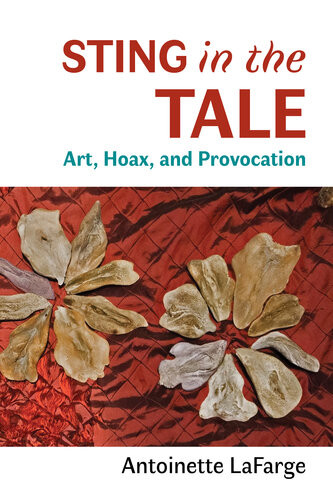

Most ebook files are in PDF format, so you can easily read them using various software such as Foxit Reader or directly on the Google Chrome browser.
Some ebook files are released by publishers in other formats such as .awz, .mobi, .epub, .fb2, etc. You may need to install specific software to read these formats on mobile/PC, such as Calibre.
Please read the tutorial at this link: https://ebookbell.com/faq
We offer FREE conversion to the popular formats you request; however, this may take some time. Therefore, right after payment, please email us, and we will try to provide the service as quickly as possible.
For some exceptional file formats or broken links (if any), please refrain from opening any disputes. Instead, email us first, and we will try to assist within a maximum of 6 hours.
EbookBell Team

4.4
12 reviewsAn illustrated survey of artist hoaxes, including impersonations, fabula, cryptoscience, and forgeries, researched and written by an expert “fictive-art” practitioner.
In her groundbreaking book, internationally recognized multimedia artist and writer Antoinette LaFarge reflects on the most urgent question of today: where does truth lie, and how is it verified? Encouraging readers to critically question the role art plays in shaping reality, Sting in the Tale: Art, Hoax, and Provocation defines a new genre of art that fabricates evidence to support a central fiction. Interweaving contemporary "fictive art" practice with a lineage of hoaxes and impostures dating from the 17th century, LaFarge offers the first comprehensive survey of this practice.
The shift from the early information age to our "infocalypse" era of rampant misinformation has made fictive art an especially radical form as it straddles the lines between fact, fiction, and wild imagination. Artists deploy a wide range of practices to substantiate their fictions, manufacturing artefacts, altering photographs, and posing as experts from many different fields. A fictive-art practitioner herself, LaFarge explores and underscores the myriad ways art can ground or destabilize one's lived reality, forcing us to question our subjective experience and our understanding of what counts as evidence.
Many examples of these curious and sometimes notorious fabrications are included - from nonexistent artists and peculiar museums to cryptoscientific objects like fake skeletons and staged archaeological evidence. From the intriguing Cottingley fairy photographs "captured" in 1917 by teenage sisters, to the Museum of Jurassic Technology; from the work of artists like Iris Häussler, Joan Fontcuberta, and Eva and Franco Mattes to the enigmatic encyclopedia known as the Codex Seraphinianus, fictive art continues to reframe assumptions made by its contemporaneous culture. With all the attendant consequences of mistrust, outrage, and rejection, fictive art practitioners both past and present play upon the fragile trust that establishes societies, underlining the crucial roles played by perception and doubt.